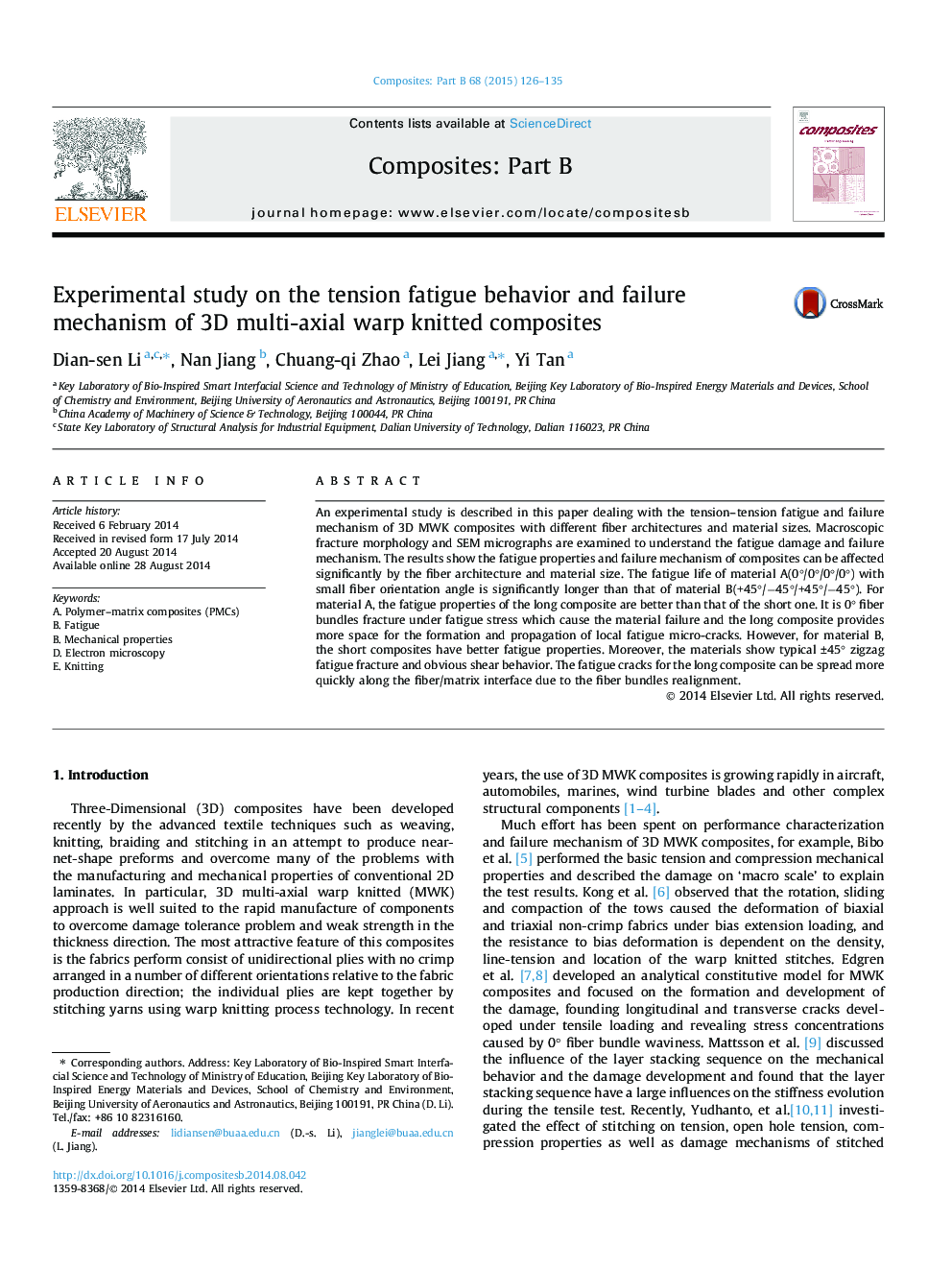| Article ID | Journal | Published Year | Pages | File Type |
|---|---|---|---|---|
| 7213201 | Composites Part B: Engineering | 2015 | 10 Pages |
Abstract
An experimental study is described in this paper dealing with the tension-tension fatigue and failure mechanism of 3D MWK composites with different fiber architectures and material sizes. Macroscopic fracture morphology and SEM micrographs are examined to understand the fatigue damage and failure mechanism. The results show the fatigue properties and failure mechanism of composites can be affected significantly by the fiber architecture and material size. The fatigue life of material A(0°/0°/0°/0°) with small fiber orientation angle is significantly longer than that of material B(+45°/â45°/+45°/â45°). For material A, the fatigue properties of the long composite are better than that of the short one. It is 0° fiber bundles fracture under fatigue stress which cause the material failure and the long composite provides more space for the formation and propagation of local fatigue micro-cracks. However, for material B, the short composites have better fatigue properties. Moreover, the materials show typical ±45° zigzag fatigue fracture and obvious shear behavior. The fatigue cracks for the long composite can be spread more quickly along the fiber/matrix interface due to the fiber bundles realignment.
Keywords
Related Topics
Physical Sciences and Engineering
Engineering
Engineering (General)
Authors
Dian-sen Li, Nan Jiang, Chuang-qi Zhao, Lei Jiang, Yi Tan,
